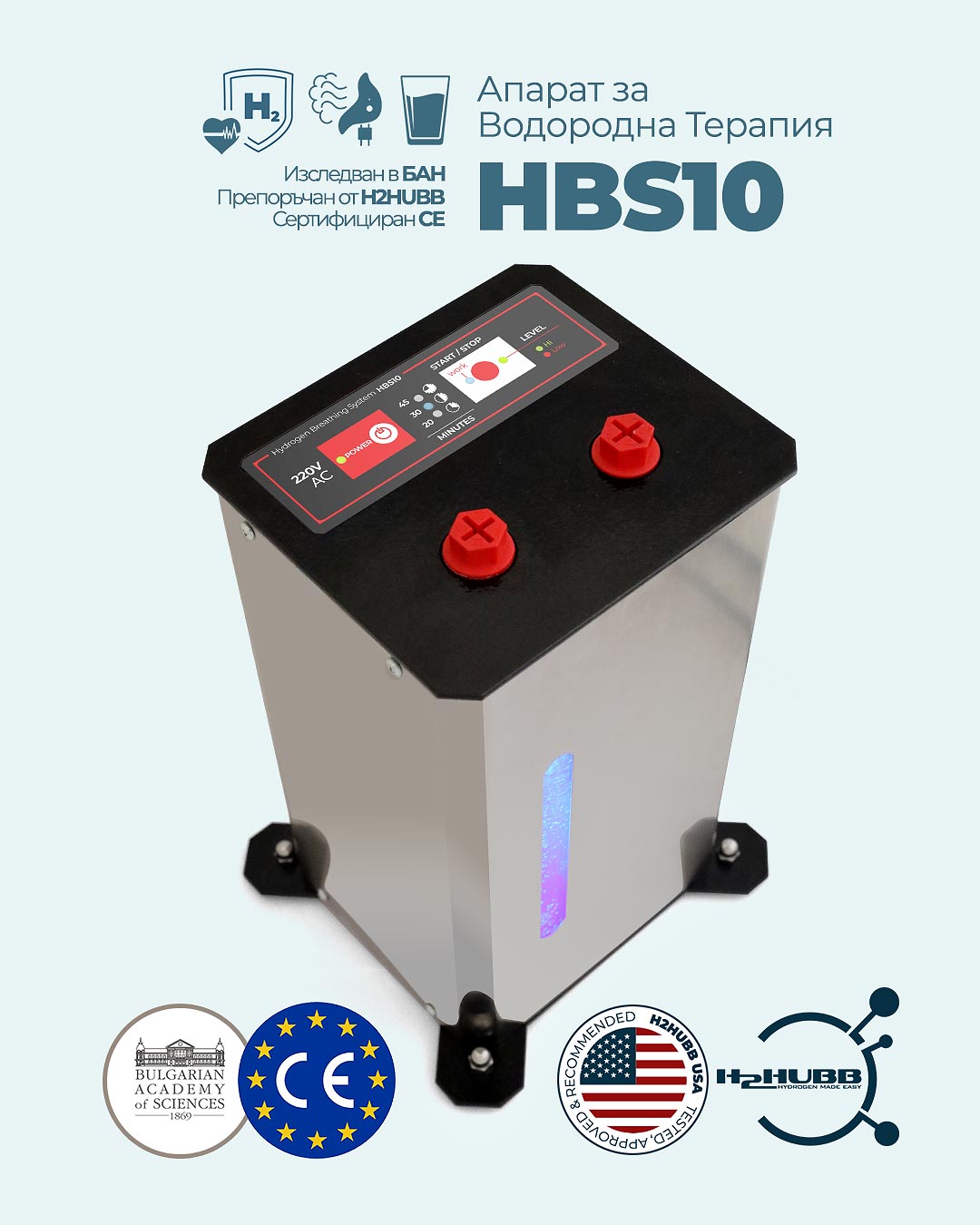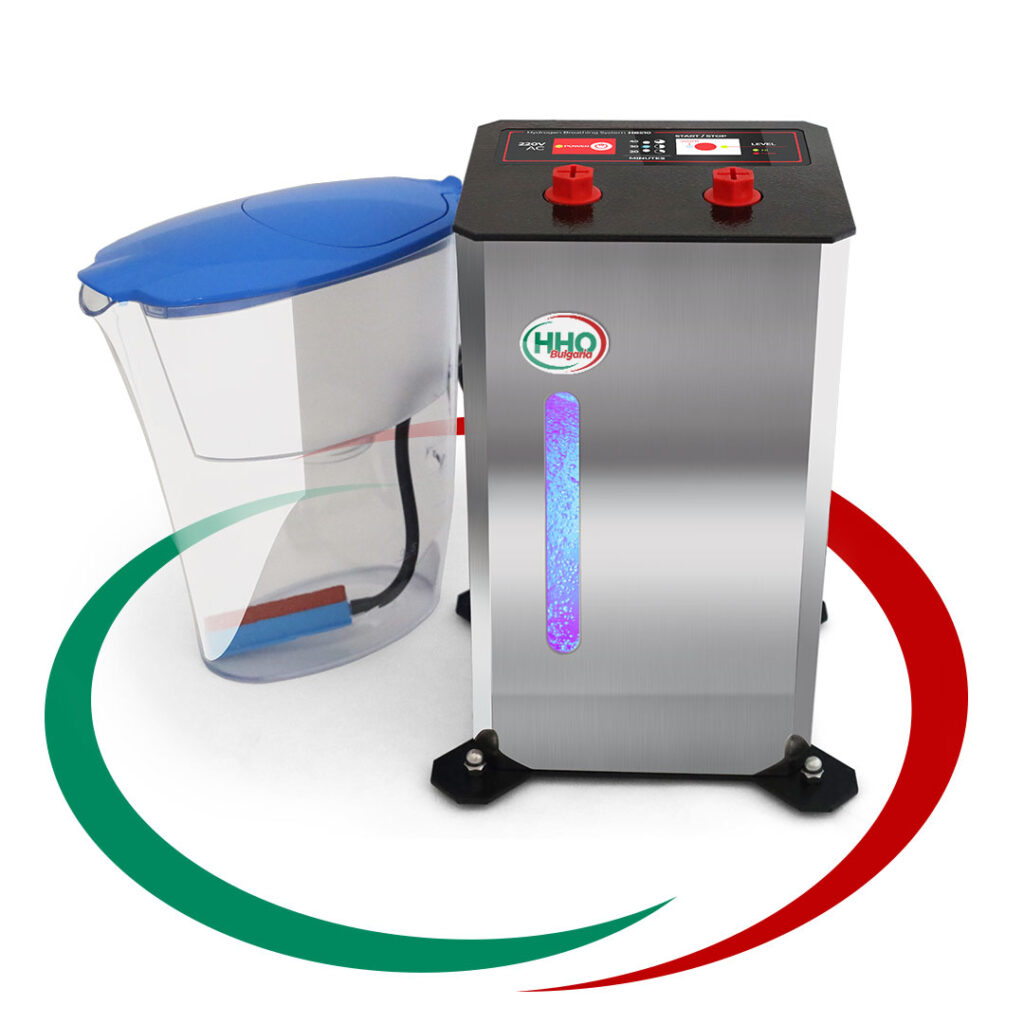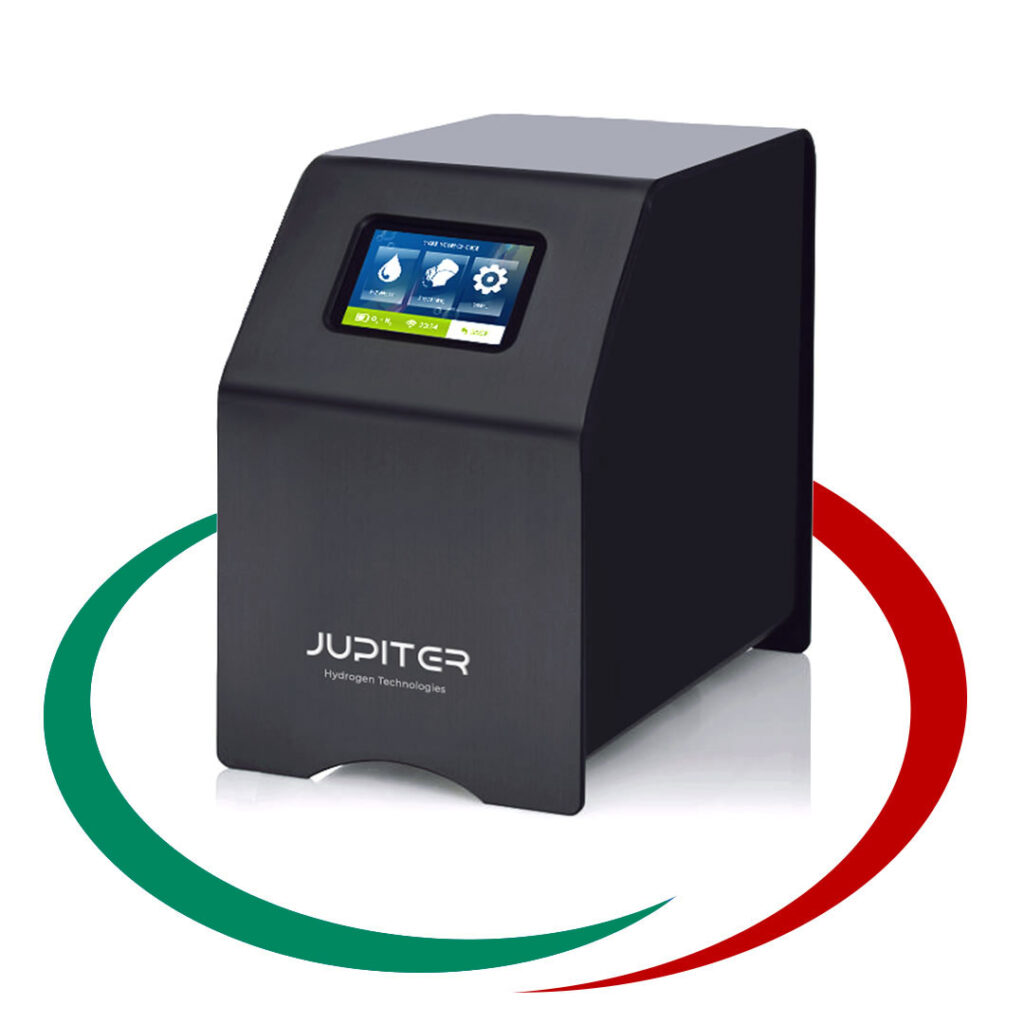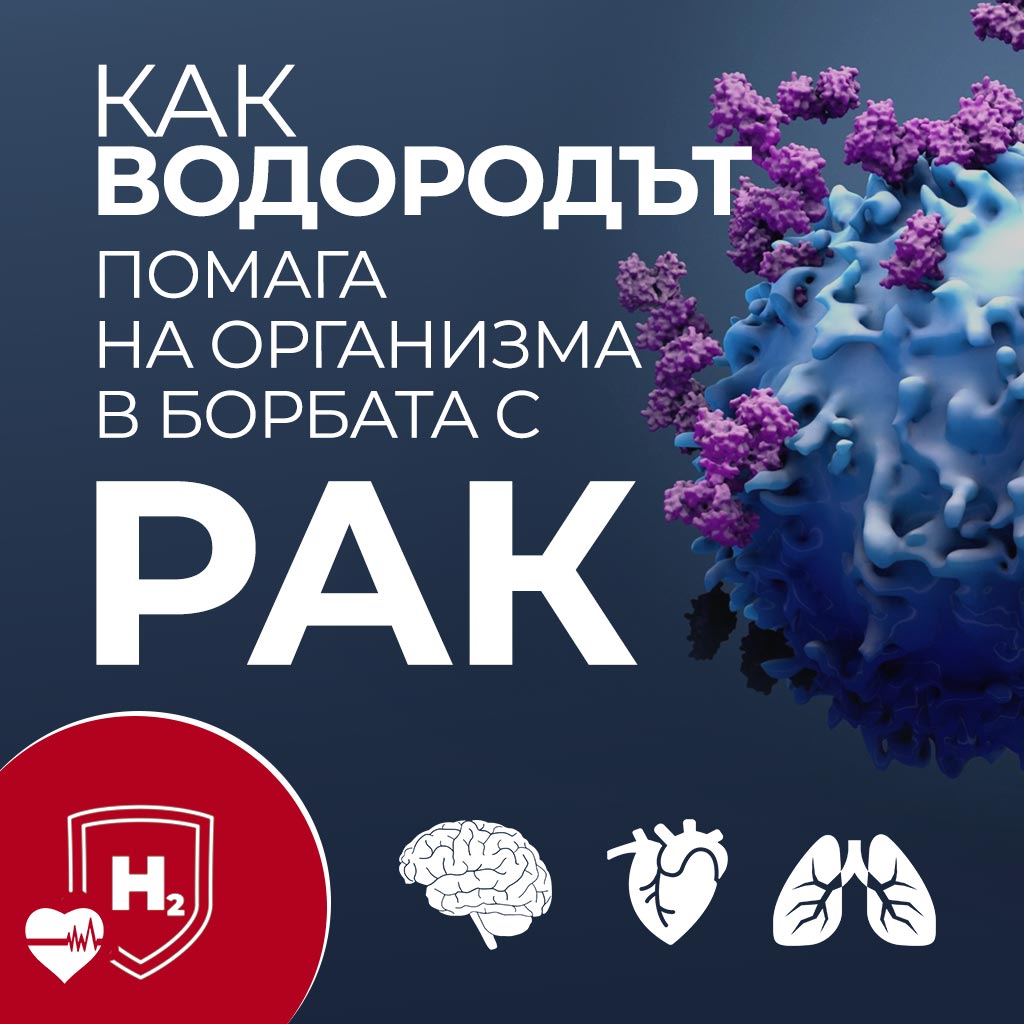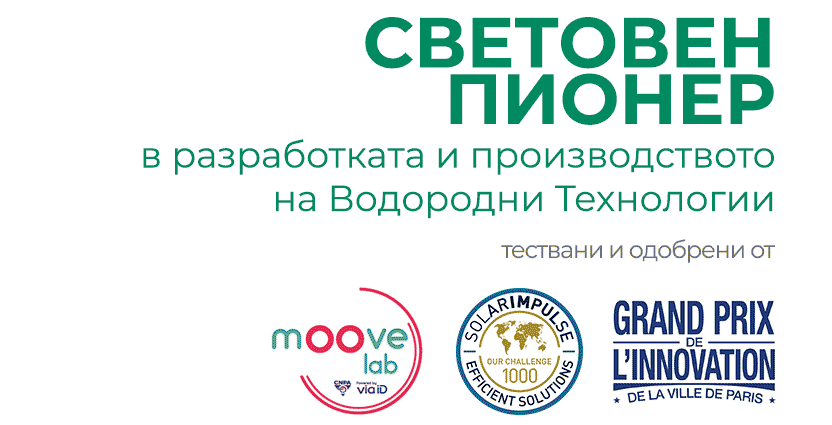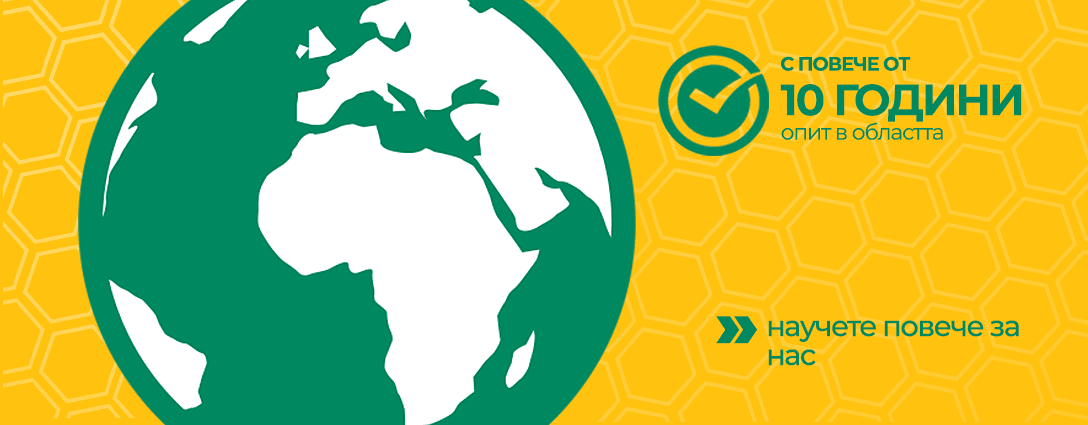H2 терапията подобрява симптомите на COVID-19Научно Изследване
1 Introduction
In December 2019, a novel coronavirus named severe acute respiratory syndrome coronavirus 2 (SARS-CoV-2) caused acute pneumonia disease (COVID-19) broke out in Wuhan, China, and quickly spread to many countries worldwide, especially in Europe, America, and South-East Asia.[1–4] By May 1, 2021 globally, over 153 million cases and more than 3.2 million deaths with COVID-19 disease have been confirmed globally from World Health Organization (WHO) situation report.[4] Compared with SARS, which also spread around the world in 2003, SARS-CoV-2 was more contagious. Compared with flu, SARS-CoV-2 led to a higher mortality rate.[5,6] On January 30, 2020, the WHO declared the COVID-19 pneumonia as a “Public Health Emergency of International Concern” , and on March 12, it officially declared COVID-19 a global pandemic, this means not only an escalation in the severity of the epidemic, but also an escalation in the difficulty of fighting it.[7] Due to the lack of medicines and vaccines, basic health services for COVID-19 are often interrupted. The number of COVID-19 deaths increases with age especially over 80 years old; moreover, basical diseases such as cardiovascular, cerebrovascular, and respiratory diseases increase the risk of death for COVID-19 patients and lead great difficulties to treatment.[4] Therefore, there is an urgent need for effective therapeutics to not only reduce the infection and fatality rates of COVID-19, but also improve the survival status of patients.
Although Remdesivir, Chloroquine, Hydroxychloroquine, etc, have proven to be effective for the treatment of COVID-19, clinical data indicates that these small molecule drug candidates exhibited multiple side effects, for instance, headache, dizziness, diarrhea, stomach cramps, vomiting, arrhythmia, low blood pressure, liver inflammation, and sweating.[8–11] Hypoxia initiated by lung injury leads to multiple organ damage[12–14][15] Recently, molecular hydrogen (H2) has been applied as therapeutic medical gas to reduce various organ system dysfunctions and improve survival rate due to its anti-oxidant, anti-inflammatory, and anti-apoptotic actions. It has been found that inhaled hydrogen therapy ameliorated acute lung injury in animal models[16–18] Hydrogen-oxygen nebulizer therapy, an interesting new strategy that has been officially recommended by the New Coronavirus Pneumonia Prevention and Control Program (7th edition) published by the National Health Commission of China,[19] is of great significance to verify its validity. A multicenter, randomized, double-blind, parallel-group controlled trial has shown that hydrogen-oxygen therapy is superior to oxygen therapy in terms of safety and tolerability in patients with acute exacerbation of chronic obstructive pulmonary disease .[20] Oxygen therapy and noninvasive mechanical ventilation have limited effect on the emergency treatment of tracheal stenosis,[21] and also have important application in the treatment of critical respiratory failure in intensive care unit. Low density and low molecular weight gaseous helium (He) has been shown to reduce airway resistance and inspiratory force in patients with upper airway obstruction.[22,23] However, due to the high cost of helium storage and production, it cannot be widely used in clinic. So far, in the emergency treatment of tracheal stenosis, there is no other way to reduce the inspiratory capacity satisfactorily except He inhalation. H2 has similar physical properties to He, so it may reduce the airway resistance of narrow trachea. In addition, hydrogen can be produced easily and cheaply by electrolyzing water, it can even be available in ambulance.[24] Hydrogen generator is new equipment, which has been reported to be used in the deposition of calcium oxalate in kidney, cerebral ischemia-reperfusion injury and chronic obstructive pulmonary disease model rats, and it showed good effects in reducing inflammation and biological safety.[25–27] However, up to now, the clinical application of hydrogen-oxygen therapy in COVID-19 patients has not been reported. In this study, we retrospectively collected and analyzed the detailed clinical data of SARS-CoV-2-infected patients diagnosed in the laboratory of Shishou Hospital of Traditional Chinese Medicine (Jingzhou, Hubei). In this study, we analyzed the clinical characteristics of COVID-19 pneumonia patients, evaluated the effectiveness and safety of hydrogen-oxygen mixture generated by medical hydrogen-oxygen nebulizers in the treatment of COVID-19, in viewing to provide a new clinical therapy for the prevention and treatment of this major infectious disease. We did a retrospective review of medical records from 24 adult patients with moderate and severe COVID-19 pneumonia admitted to Shishou Hospital of Traditional Chinese Medicine from January 29 to March 20, 2020. COVID-19 is diagnosed according to the New Coronavirus Pneumonia Prevention and Control Program (7th edition) published by the National Health Commission of China.[19] The definition of severe patients is that adult meets any of the following items: shortness of breath, respiratory rate > 30 times min−1 The patients recruited in this study meet any of the following criteria: patients were diagnosed as COVID-19; patients were aged between 18 and 80 years; patients were treated with nebulized hydrogen-oxygen mixture. Exclusion criteria: patients who have withdrawn from hydrogen-oxygen therapy; patients accompanied with liver, kidney, and heart diseases. This study was reviewed and approved by the Medical Ethical Committee of Affiliated Hospital of Guangdong Medical University (Ethical approval No. PJ2020-029). Written informed consent was obtained from each enrolled patient. Clinical records, laboratory findings, and chest computed tomography (CT) scans were reviewed for 24 patients hospitalized with COVID-19. All information is obtained and managed through custom data collection articles, and 2 researchers independently collected and reviewed data collection articles to verify the accuracy of the data. Basic clinical information of new admitted patients was collected, including gender, age, smoking history, other disease histories. Also, whether patients have direct contact with other COVID-19 patients were investigated. The interval time of CT examination, clinical symptoms including fever, cough, expectoration, fatigue, sore throat, diarrhea, and the results of the first and last laboratory examinations including immune inflammation indicators, electrolytes, myocardial enzyme profile, liver function, and renal function as well as the clinical status, cured, discharged, in treatment, critical, and death up to the study date was analyzed. Chest plain scan was performed with United imaging 40 row CT instrument. The scanning parameters were: thickness 2.00 mm, cols 512, rows 512, zoom 1.00, window level 600, window width 1600. The patient was in supine position. The scanning range was from the apex to the costophrenic angle at the bottom of the lung. Two senior radiographers in the cardiothoracic group reviewed the films, analyzed the distribution, scope, shape, pleural effusion, lymph node enlargement of the patients, and analyzed the imaging manifestations of different clinical types and the relationship with the course of disease. To facilitate the statistics, the left and right lungs were divided into 10 segments, a total of 20 segments. According to WHO guidelines and regulations of the Chinese National Health Commission, throat swab samples of COVID-19 patients were collected, and quantitative RT-PCR recommended by China Center for Disease Control and Prevention was used to detect SARS-CoV-2. All laboratory work was completed by staff from Da An Gene Co, Ltd. of Sun Yat-Sen University and COVID-19 positive case was certified according to the New Coronavirus Pneumonia Prevention and Control Program (7th edition) published by the National Health Commission of China.[19] All the recruited patients received antiviral and symptomatic treatment, and 12 of them were additionally inhaled with hydrogen-oxygen mixture produced by the Medical Hydrogen-Oxygen Generator with Nebulizer (AMS-H-03, Asclepius Meditec Co, Shanghai, China), which was listed by the State Food and Drug Administration in national innovation 3 categories of respiratory medical equipment. As shown in previous reports, the Medical Hydrogen-Oxygen Generator with Nebulizer that has been approved for public use can provide an output for the hydrogen-oxygen gas mixture comprising 33% O2 and 66% H2 of 2000 to 3000 mL per minute by electrolysis of pure water.[28] SPSS 20.0 was used for statistical analysis. Continuous variables are expressed as median and interquartile range , and classified variables are expressed as frequency and percentage (%). The difference of continuous variables before and after treatment was compared by Mann–Whitney U test, and the difference of classified variables was compared by chi square test and Fisher exact test. All the patients had a COVID-19 contact history, which was consistent with the epidemiological characteristics. The patients were divided into 2 groups, as those who were subjected to receive additional hydrogen-oxygen therapy (case group, n = 12), and those who were not (control group, n = 12). The clinical baseline indicators are summarized in article 1. The proportions of male/female in case group and control group are 5/7 and 6/6, and median ages were 51.5 (41.25–59) and 54.5 (40.75–61.5) years, respectively, which are not significantly different between the 2 groups. The clinical types are moderate and severe, which represent the main types of COVID-19. Fever, fatigue, cough, pharyngeal hemorrhage, and tonsil enlargement are the main clinical manifestations. All 24 patients underwent chest CT scan and showed typical imaging features, such as multiple ground glass shadows of the lung. All the patients in case group survived and discharged, while a patient in control group died during hospitalization. These findings indicate that SARS-CoV-2 mainly causes clinical manifestations of inflammation and respiratory infections. In this study, we tested and compared the clinical indicators related to immune inflammation in COVID-19 patients, including white blood cell count , neutrophil count , lymphayte count , monocyte count , neutrophil percentage , lymphayte percentage , monocyte percentage, and C-reactive protein (CRP) (article 2). As shown in article 2, although the neutrophil percentage and the concentration and abnormal proportion of CRP before therapy have no significant differences between case group and control group, they are significantly lower in case group than in control group after therapy. The results indicate that antivirus, support, and other symptomatic treatments may make limited contribution to reducing inflammation, whereas hydrogen-oxygen therapy can help to suppress inflammatory responses induced by SARS-CoV-2 infection, so as to alleviate the clinical symptoms. In this study, we tested and compared the electrolyte-related indicators of the hospitalized COVID-19 patients, including potassium , sodium , chlorine, total calcium, ionic calcium, CO2-binding capacity, phosphorus , and magnesium (article 3). The results show that the levels of potassium, sodium, chlorine, phosphorus, total calcium, and CO2-binding capacity of some patients in the 2 groups were abnormal before therapy, while both the routine therapy and hydrogen-oxygen therapy greatly improved electrolyte disturbances. Moreover, there are no significant differences in these indexes between case group and control group after therapy. These findings suggest that hydrogen-oxygen, antivirus, support, and symptomatic therapy may maintain the electrolyte balance and improve respiratory acidosis to a certain extent. In this study, we analyzed the related indexes of myocardial enzymes, such as lactate dehydrogenase (LDH), creatine kinase (CK), and CK isoenzymes (CK-MB) in 24 hospitalized COVID-19 patients (article 4). Before therapy, abnormal changes of LDH, CK, and CK-MB levels were observed in the 2 groups. Except the LDH levels of 2 patients in control group, all the indexes of myocardial enzymes returned to normal range after therapy; however, there are no significant differences in the changes of LDH between case group and control group. The results imply that hydrogen-oxygen therapy may have certain protective effect on the heart of COVID-19 patients. In this study, we analyzed the liver function-related indexes of the hospitalized COVID-19 patients, such as serum direct bilirubin (DBil), indirect bilirubin (IBil), aspartate aminotransferase (ALT), alanine aminotransferase (AST), AST/ALT, Glutamyl Transferase (GGT), alkaline phosphatase (ALP), total protein (TP), Albumin (Alb), Globulin (Glo), Albumin/globulin, and total bile acid (article 5). Before therapy, the levels of DBil, ALT, AST, GGT, ALP, TP, Alb, Glo, and Albumin/globulin exhibited abnormal changes in the COVID-19 patients. Although the changes of liver function indexes are not significant between case group and control group after therapy, the control group seemed to be worse than those before therapy. These results suggest that hydrogen-oxygen therapy has no hepatotoxic effect on patients with COVID-19. In this study, we compared and analyzed the renal function related indexes of patients with COVID-19, including urea (Ure), creatinine , uric acid , and cystatin C (CysC) (article 6). The results showed that the levels of Ure and CysC were abnormal in some patients of 2 groups before therapy; however, there are no significant differences in all the indexes between case group and control group after therapy, indicating that the renal function of patients with COVID-19 would not be affected by hydrogen-oxygen therapy. COVID-19 has become a global pandemic infectious disease. Due to the lack of specific antiviral drugs, supportive therapy is used as the main treatment method.[29] Clinical studies have shown that the death of COVID-19 patients is characterized by typical pathological changes of lung parenchyma, and eventually develop progressive hypoxemia, lactatemia, acute respiratory distress syndrome , and respiratory failure.[30–33] Hyperbaric oxygen therapy and normobaric oxygen therapy such as nasal duct and mask oxygen inhalation, noninvasive and invasive ventilation, and extracorporeal membrane oxygen have been widely used in the treatment of COVID-19; nonetheless, the mortality of severe patients remains high,[31,32] and even more than 60%.[31] This suggests that inhalation of excessive oxygen (O2) may contribute to the detriment of survival in COVID-19 patients. Therefore, it is urgent to explore approaches for elimination of oxygen toxicity. Hyperoxia, also called excess oxygen, increases formation of reactive oxygen species (ROS), and hence causes multiple-organ toxicity (e.g., central nervous, pulmonary, cardiac, and ocular toxicity).[34] In contrast to O2, H2 is reductive, thereby it can selectively scavenge ROS (highly reactive hydroxyl radical, but not super oxide, peroxide, or nitric oxide) and has no serious side effects.[35] Thus, we assumed that inhaled O2 added with a certain concentration of H2 may effectively protect organ functions against hyperoxia-induced toxicity. Hydrogen-oxygen nebulizers can provide hydrogen-oxygen mixed gas diffusing into the human body, reduce the flow resistance of gas in the bronchial tree, improve the utilization rate of H2 and O2, so as to provide auxiliary treatment for dyspnea and hypoxemia. In this study, we retrospectively observed the curative effect of hydrogen-oxygen therapy in 12 patients with moderate and severe COVID-19. The results of statistical analysis show marked improvement in immune-inflammation after treatment with hydrogen-oxygen mixture. More importantly, all the patients recovered and finally discharged. These findings suggest that hydrogen-oxygen therapy is conducive to alleviate inflammation, ameliorate dyspnea, and promote survival. Recent studies suggest that oxidative stress is associated with RNA virus infection and pathogenesis including viral replication, immune response, apoptosis, inflammation, and organ dysfunction; thereby, it can enhance the severity of COVID-19.[36–38] It has been demonstrated that SARS-CoV-2 can substantially promote mononuclear phagocyte system and neutrophil granulocytes to produce ROS which increase the formation of neutrophil extracellular traps , suppress the adaptive immune responses, and cause organ damage.[39,40] The systemic hypoxia induced by persistent hypoxemia should be treated with extra oxygen supply. However, oxygen therapy that may cause oxidative stress often facilitates COVID-19 patients to develop respiratory distress.[41,42] We herein observed significant decrease of the neutrophil percentage and the concentration and abnormal proportion of CRP in COVID-19 patients who had received additional hydrogen-oxygen therapy (article 2), suggesting that anti-oxidation, anti-virus, and anti-inflammation are probably involved in the underlying mechanism of this treatment method. In the present study, we observed the abnormal elevations of LDH, CK, CK-MB, DBil, ALT, AST, GGT, Glo, and Ure and the decreases of TP, Alb, and CysC in a part of the patients before therapy by examining myocardial enzyme profile and functions of liver and kidney (articles 4–6), suggesting that SARS-CoV-2 can damage heart, liver, and kidney. In addition, we found that the antivial and symptomatic therapy seemed to further impair liver function (article 5), indicating that the antivial drugs may possess hepatotoxicity. Japanese scholars Katherine and Hayashida have demonstrated that breathing 2% H2 can lighten liver and myocardial ischemia-reperfusion injury in animal models.[43] However, we found that hydrogen-oxygen therapy suppressed the elevations of LDH and DBil and the decreases of TP and Alb with no statistical significance (articles 4 and 5), which may be due to the small number of cases. To our knowledge, this study is the first to demonstrate the curative effect of hydrogen-oxygen therapy on COVID-19; however, the sample size is the primary limitation. A prospective multicenter clinical trial is needed to clarify whether hydrogen-oxygen therapy is superior to hyperbaric oxygen therapy and normobaric oxygen therapy in COVID-19 treatment. The authors thank the patients and staff from all the units who participated in the study, and thank Xiaorong Shui, Dafeng Chen, and Qing He for their contributions to this study. PL and YD performed the experiments and collected the data. YH, DC, QH, and ZH organize and analyzed the data. WL and YH wrote the manuscript. SH and WL designed this study. Data curation: Yuan He, Dafeng Chen, Qing He, Zufeng Huang. Funding acquisition: Shian Huang. Investigation: Peng Luo, Yuanfang Ding, Shian Huang, Wei Lei. Methodology: Peng Luo, Yuanfang Ding, Yuan He. Project administration: Wei Lei. Resources: Peng Luo, Yuanfang Ding. Validation: Shian Huang. Writing – original draft: Wei Lei.2 Materials and methods
2.1 Study design and patients
2.2 Data collection
2.3 CT examination method
2.4 Laboratory diagnosis
2.5 Hydrogen-oxygen therapy
2.6 Statistical analysis
3 Results
3.1 Analysis of clinical baseline indicators
Analysis of clinical baseline indicators.Characteristic Index Case Control P Age, median (IQR)—yrs 51.5 (41.25–59) 54.5 (40.75∼61.5) .644 Age group—n (%) <30 yrs 0 (0) 0 (0) 1.000 30–39 yrs 2 (16.67) 2 (16.67) 40–49 yrs 3 (25) 3 (25) ≥50 yrs 7 (58.33) 7 (58.33) Gender—n (%) Female 7 (58.33) 6 (50) 1.000 Male 5 (41.67) 6 (50) Smoking—n (%) Yes 1 (8.33) 0 (0) 1.000 No 11 (91.67) 12 (100) Clinical typing—n (%) Mild type 0 (0) 0 (0) 1.000 Moderate type 9 (75) 10 (83.33) Severe type 3 (25) 2 (16.67) Critical type 0 (0) 0 (0) Symptoms—n (%) Fever 10 (83.33) 10 (83.33) 1.000 Chills 2 (16.67) 1 (8.33) 1.000 Headache 0 (0) 3 (25) .217 Fatigue 11 (91.67) 10 (83.33) 1.000 Shortness of breath 4 (33.33) 1 (8.33) .317 Sore throat 4 (33.33) 6 (50) .680 Cough 11 (91.67) 10 (83.33) 1.000 Sputum production 5 (41.67) 3 (25) .667 Chest pain 1 (8.33) 0 (0) 1.000 Diarrhoea 2 (16.67) 1 (8.33) 1.000 Signs of infection—n (%) Throat congestion 10 (83.33) 6 (50) .193 Tonsil swelling 2 (16.67) 2 (16.67) 1.000 Enlargement of lymph nodes 0 (0) 0 (0) 1.000 Abnormal Chest CT—n (%) 12 (100) 12 (100) 1.000 Treatment outcome—n (%) Death 0 (0) 1 (8.33) 1.000 Discharge 12 (100) 11 (91.67) 3.2 Analysis of related immune inflammation indicators
Analysis of indicators related to immune inflammation.Before therapy After therapy Variable Case Control P Case Control P White blood cell count Median (IQR)—×109/L 5.27 (4.34–6.14) 4.36 (3.07–7.76) .488 4.82 (4.19–6.08) 5.49 (4.25–7.03) .544 > 9.5 × 109/L—n (%) 0 (0) 2 (16.67) .037 0 (0) 0 (0) < 3.5 × 109/L—n (%) 0 (0) 3 (25) 0 (0) 0 (0) Neutrophil count Median (IQR)—×109/L 3.29 (2.55–4.16) 2.83 (1.63–6.42) .419 2.55 (2.35–4.32) 3.65 (2.89–5.21) .126 > 6.3 × 109/L—n (%) 0 (0) 3 (25) .014 1 (8.33) 0 (0) 1.000 < 1.8 × 109/L—n (%) 0 (0) 3 (25) 0 (0) 0 (0) Lymphocyte count Median (IQR)—×109/L 1.22 (1.05–1.7) 0.98 (0.67–1.35) .133 1.5 (1.14–1.73) 1.19 (0.99–1.51) .184 > 3.2 × 109/L—n (%) 0 (0) 0 (0) .414 0 (0) 0 (0) < 1.1 × 109/L—n (%) 4 (33.33) 7 (58.33) 3 (25) 4 (33.33) Monocyte count Median (IQR)—×109/L 0.45 (0.38–0.54) 0.31 (0.16–0.43) .024 0.36 (0.28–0.48) 0.36 (0.28–0.44) .643 > 0.6 × 109/L—n (%) 1 (8.33) 1 (8.33) 1.000 0 (0) 0 (0) 1.000 < 0.1 × 109/L—n (%) 0 (0) 1 (8.33) 0 (0) 1 (8.33) Neutrophil percentage Median (IQR)—% 63.25 (56.88–68.85) 66.2 (50.58–84.65) .564 58.1 (52.9–69.75) 66.55 (60.83–76.85) .030 > 75%—n (%) 2 (16.67) 4 (33.33) .640 2 (16.67) 4 (33.33) .640 < 40%—n (%) 0 (0) 0 (0) 0 (0) 0 (0) Lymphocyte percentage Median (IQR)—% 24.65 (20.7–32.33) 25.4 (8.55–33.23) .665 29.45 (20.03–35.95) 21.5 (15.78–29.63) .112 > 50%—n (%) 0 (0) 1 (8.33) .1931 0 (0) 0 (0) .667 < 20%—n (%) 2 (16.67) 5 (41.67) 3 (25) 5 (41.67) Monocyte percentage Median (IQR)—% 8.5 (7.38–9.45) 6.35 (4.05–8.2) .013 6.7 (5.88–8.3) 6.1 (5.43–7.18) .370 > 10%—n (%) 2 (16.67) 1 (8.33) .590 1 (8.33) 1 (8.33) 1.000 < 3%—n (%) 0 (0) 2 (16.67) 1 (8.33) 1 (8.33) CRP Median (IQR)—mg/L 7.4 (3.45–23.2) 18.15 (4.83–43.33) .184 2.4 (1.25–6.15) 7.95 (5.05–23.98) .022 > 4 mg/L—n (%) 9 (75) 10 (83.33) 1.000 3 (25) 10 (83.33) .012 3.3 Analysis of electrolyte-related indexes
Analysis of electrolyte-related indexes.Before therapy After therapy Variable Case Control P Case Control P Potassium Median (IQR)—mmol/L 4.09 (3.79–4.25) 3.66 (3.55–4.14) .166 4.32 (4–4.47) 4.49 (4.25–4.72) .166 > 5.5 mmol/L—n (%) 0 (0) 0 (0) 1.000 0 (0) 0 (0) < 3.5 mmol/L—n (%) 2 (16.67) 2 (16.67) 0 (0) 0 (0) Sodium Median (IQR)—mmol/L 139.36 (138.9–140.48) 139.45 (136.68–140.65) .419 139.2 (138.57–140.13) 138.72 (138.26–140.01) .624 > 147 mmol/L—n (%) 0 (0) 0 (0) 1.000 0 (0) 0 (0) < 135 mmol/L—n (%) 0 (0) 1 (8.33) 0 (0) 0 (0) Chlorine Median (IQR)—mmol/L 99.17 (94.46–101.19) 103.35 (98.05–105.43) .018 101.73 (100.96–102.4) 100.54 (95.61–101.41) .053 > 108 mmol/L—n (%) 0 (0) 0 (0) .640 0 (0) 0 (0) .093 < 96 mmol/L—n (%) 4 (33.33) 2 (16.67) 0 (0) 4 (33.33) Total calcium Median (IQR)—mmol/L 2.31 (2.25–2.36) 2.16 (2.08–2.23) .004 2.38 (2.37–2.41) 2.37 (2.26–2.4) .201 > 2.8 mmol/L—n (%) 0 (0) 0 (0) 1.000 0 (0) 0 (0) 1.000 < 2 mmol/L—n (%) 0 (0) 1 (8.33) 0 (0) 1 (8.33) Ionic calcium Median (IQR)—mmol/L 1.15 (1.13–1.18) 1.08 (1.04–1.12) .005 1.19 (1.17–1.2) 1.18 (1.13–1.21) .502 > 1.4 mmol/L—n (%) 0 (0) 0 (0) 0 (0) 0 (0) 1.000 < 1 mmol/L—n (%) 0 (0) 0 (0) 0 (0) 1 (8.33) CO2-binding capacity Median (IQR)—mmol/L 27.3 (26.65–30.33) 23.9 (22.35–25.68) .002 25.2 (24.1–28.8) 27.15 (23.95–30.55) .506 > 29 mmol/L—n (%) 3 (25) 4 (33.33) 1.000 2 (16.67) 4 (33.33) .371 < 23 mmol/L—n (%) 0 (0) 0 (0) 0 (0) 1 (8.33) Phosphorus Median (IQR)—mmol/L 1.05 (0.92–1.17) 1.02 (0.88–1.14) .623 1.21 (1.15–1.3) 1.16 (0.98–1.26) .260 > 1.6 mmol/L—n (%) 0 (0) 0 (0) 1.000 0 (0) 0 (0) 1.000 < 0.8 mmol/L—n (%) 0 (0) 1 (8.33) 0 (0) 1 (8.33) Magnesium Median (IQR)—mmol/L 0.99 (0.96–1.02) 0.96 (0.91–1.02) .401 0.99 (0.92–1.04) 0.98 (0.89–1.08) .795 > 1.25 mmol/L—n (%) 0 (0) 0 (0) 0 (0) 0 (0) < 0.65 mmol/L—n (%) 0 (0) 0 (0) 0 (0) 0 (0) 3.4 Analysis of myocardial enzymes
Analysis of myocardial enzyme profile.After therapy Variable Case Control P Case Control P LDH Median (IQR)—U/L 220.15 (167.88–248.08) 149.45 (121.08–325.2) .094 183.7 (135.08–196.38) 172.9 (141.45–227.68) .707 > 240 U/L—n (%) 3 (25) 3 (25) 1.000 0 (0) 2 (16.67) .331 < 100 U/L—n (%) 0 (0) 0 (0) 0 (0) 0 (0) CK Median (IQR)—U/L 48.85 (24.45–108.8) 53.8 (44.02–153.05 .273 42.1 (26.53–57.6) 44.4 (40.78–65.73) .544 > 194 U/L—n (%) 0 (0) 2 (16.67) .331 0 (0) 0 (0) < 24 U/L—n (%) 3 (25) 1 (8.33) 0 (0) 0 (0) CK-MB Median (IQR)—U/L 8.2 (6.53–9.9) 10.2 (8.88–16.2) .073 9.15 (7.7–10.65) 7.5 (5.23–12.28) .452 > 25 U/L—n (%) 0 (0) 1 (8.33) 1.000 0 (0) 0 (0) 3.5 Analysis of liver function-related indexes
Analysis of indexes related to liver function.Before therapy After therapy Variable Case Control P Case Control P DBil Median (IQR)—μmol/L 3.85 (2.83–6.28) 3.35 (2.58–4.28) .470 3.3 (2.55–4.7) 3.6 (2.8–5.45) .506 > 6.8 μmol/L—n (%) 2 (16.67) 1 (8.33) 1.000 0 (0) 2 (16.67) .478 IBil Median (IQR)—μmol/L 6.75 (5.1–10.68) 4.75 (3.97–7.1) .046 6.2 (4.18–9.15) 6.6 (6.13–8.78) .583 > 20 μmol/L—n (%) 0 (0) 0 (0) 0 (0) 0 (0) ALT Median (IQR)—U/L 28.65 (19.4–36.33) 23.05 (20.4–36.45) .603 22.4 (18–36.68) 32.7 (18–48.83) .507 > 45 U/L—n (%) 1 (8.33) 1 (8.33) 1.000 2 (16.67) 3 (25) 1.000 AST Median (IQR)—U/L 24.15 (19.75–28.95) 31.15 (22.73–45.6) .094 20.3 (17.23–27.13) 25.2 (18.85–36.33) .141 > 45 U/L—n (%) 0 (0) 3 (25) .217 0 (0) 1 (8.33) 1.000 AST/ALT Median (IQR) 0.88 (0.66–1.07) 1.5 (0.96–1.75) .008 0.84 (0.56–1.13) 0.98 (0.66–1.21) .665 > 2.5—n (%) 0 (0) 0 (0) 0 (0) 0 (0) GGT Median (IQR)—U/L 35.05 (24.28–61.78) 32.75 (15.73–65.78) .564 41.05 (34.18–67.65) 49.35 (29.38∼71.23) .977 > 50 U/L—n (%) 4 (33.33) 3 (25) 1.000 4 (33.33) 6 (50) .680 ALP Median (IQR)—U/L 61.65 (51.73–75.35) 56.7 (49.98–75) .603 62.2 (52.78–71.75) 65.3 (45.05–76.85) .707 > 128 U/L—n (%) 0 (0) 0 (0) 1.000 0 (0) 0 (0) 1.000 < 40 U/L—n (%) 0 (0) 1 (8.33) 0 (0) 1 (8.33) Total protein Median (IQR)—g/L 65.95 (62.63–74) 65.7 (61.05–70.53) .885 68.4 (63.5–70.48) 65.2 (59.8–68.78) .214 > 85 g/L—n (%) 0 (0) 0 (0) 1.000 0 (0) 0 (0) .217 < 60 g/L—n (%) 1 (8.33) 1 (8.33) 0 (0) 3 (25) Albumin Median (IQR)—g/L 40.45 (35.7–44.45) 41.25 (38.55–44.6) .623 42.15 (40.03–44.33) 39.85 (33.83–40.78) .060 > 53 g/L—n (%) 0 (0) 0 (0) 0 (0) 0 (0) .400 < 40 g/L—n (%) 6 (50) 5 (41.67) 3 (25) 6 (50) Globulin Median (IQR)—g/L 25.6 (23.5–27.78) 23.25 (21.33–31.13) .225 25.55 (22.85–28.3) 25 (22.68–32.85) .885 > 32 g/L—n (%) 2 (16.67) 2 (16.67) 1.000 2 (16.67) 3 (25) 1.000 < 20 g/L—n (%) 0 (0) 0 (0) 1 (8.33) 1 (8.33) Albumin/globulin Median (IQR) 1.6 (1.3–1.78) 1.75 (1.35–1.98) .401 1.5 (1.43–1.9) 1.65 (1.2–1.7) .621 > 2.5—n (%) 0 (0) 0 (0) 1 (8.33) 0 (0) 1.000 < 1—n (%) 1 (8.33) 0 (0) 0 (0) 1 (8.33) Total bile acid Median (IQR)— μmol/L 2.65 (1.63–3.6) 2.9 (1.47–4.03) .862 2.45 (1.85–4.15) 2.1 (1.8–3.73) .563 >12 μmol/L— n (%) 0 (0) 0 (0) 0 (0) 0 (0) 3.6 Analysis of renal function-related indexes
Analysis of indexes related to renal function.Before therapy After therapy Variable Case Control P Case Control P Urea Median (IQR)—mmol/L 3.13 (1.98–4.19) 3.39 (2.47–4.1) .371 3.7 (2.4–4.68) 4.06 (3.04–6.99) .175 > 7.14 mmol/L—n (%) 0 (0) 1 (8.33) 1.000 0 (0) 3 (25) .093 < 1.43 mmol/L—n (%) 0 (0) 0 (0) 0 (0) 1 (8.33) Creatinine Median (IQR)—μmol/L 62.1 (47.45–73.25) 68.9 (61.38–89) .106 72.5 (60.68–78.53) 62.7 (56.9–76.08) .402 > 97.2 μmol/L—n (%) 0 (0) 0 (0) 1 (8.33) 0 (0) 1.000 < 35.4 μmol/L—n (%) 0 (0) 0 (0) 0 (0) 0 (0) Uric acid Median (IQR)— μmol/L 285.8 (244.83–334.25) 232.45 (218.53–310.63) .356 271.1 (235.9–366.18) 302.05 (198.13–338.48) .840 > 430 μmol/L—n (%) 0 (0) 0 (0) 0 (0) 1 (8.33) 1.000 Cystatin C Median (IQR)— mg/L 0.62 (0.54–0.67) 0.62 (0.6–0.77) .311 0.65 (0.58–0.72) 0.65 (0.6–0.8) .707 > 1.05 mg/L—n (%) 0 (0) 0 (0) .590 0 (0) 0 (0) 1.000 < 0.55 mg/L—n (%) 3 (25) 1 (8.33) 1 (8.33) 1 (8.33) 4 Discussion
5 Conclusion
Acknowledgments
Author contributions
Пълно съдържание на доклада:
оригинално заглавие (букв. прев.): Водородно-кислородната терапия облекчава клиничните симптоми при дванадесет пациенти, хоспитализирани с COVID-19: Ретроспективно проучване на медицински досиета
DOI: 10.1097/MD.0000000000027759-
Резюме:
Глобалната здравна криза, причинена от новата коронавирусна болест от 2019 г. (COVID-19), води до значителна заболеваемост и смъртност, които представляват голямо предизвикателство пред респираторната медицина. Водородно-кислородната терапия допринася за лечение на тежки респираторни заболявания и подобряване на белодробните функции, но все още няма информация в подкрепа на клиничната употреба на тази терапия при пневмония COVID-19. Ретроспективно проучване на медицински досиета е проведено в Shishou Hospital of Traditional Chinese Медицина в Хубей, Китай. Пациенти с COVID-19 (на възраст ≥ 30 години), приети в болницата от 29 януари до 20 март 2020 г., бяха подложени на контролна група (n = 12), които са получили рутинна терапия, и група случаи (n = 12), които са получили допълнително водород-кислород терапия. Анализирани са клиничните характеристики на пациенти с COVID-19. Физиологичните и биохимичните показатели, включително индикатори за имунно възпаление, електролити, миокарден ензимен профил и функции на черния дроб и бъбреците, бяха изследвани преди и след водородно-кислородната терапия. Резултатите показаха значително понижение на процента на неутрофилите и концентрацията и абнормни дял на C-реактивен протеин при пациенти с COVID-19, получили допълнителна водородно-кислородна терапия. Тази нова терапия може да облекчи клиничните симптоми на пациенти с COVID-19 чрез потискане на реакциите на възпаление.


